#math blog
Text
Throughout my university education, I tried incessantly to be a good student and I took pleasure in inflating my marks. Despite being one of the few students not having studied pure maths at A-Level, I almost exclusively achieved firsts (only once achieving a 2:1 in French, which I then improved the following year) and finished my undergraduate degree in Maths with awards for my high grades and requests from my teacher to continue my studies for the sake of science. Now that the memory of Bristol is becoming more and more distant, I want to tell you, reader, how I did that.
Imposter syndrome
Before you’ve even started studying, imposter syndrome might set in. Don’t let the doubts about whether you deserve to be in your institution block your path. I remember thinking that everyone else had studied further maths; that maths was what the other students dedicated their lives to (while I just liked it enough); that my occasional lack of comprehension was proof that I got into this university on a whim and I was not as worthy as the other students. To those thoughts, I invite you to reply “Let’s see how far I can go with this.” If you really did get into an amazing university with students who are supposedly superior to you then let’s see how much you can take from this university: how many classes and mentally stimulating problem sheets, how many afternoons in your cherished campus until they realise that you’re not supposed to be there. Try your damndest to keep up and maybe you’ll surprise yourself and find that that drive is exactly what is going to keep you where you where you want to be. If you’re not supposed to be there: cash in.
Alternatively, maybe you got into a university which you think you’re too good for. Prove it. If you’re too good for this uni, then get a first and have them begging you to do a PHD. I dare you.
Come back to it later
When starting university, you need to build skills as well as learn content. You know how to memorise the notions and how to apply the formulae – you’ve been using this kind of skill since GCSE – but building analytical skills or learning to write elegant proofs cannot be done in an evening or with a pack of flash cards. When learning to write proofs, I recommend to you to write out the teacher’s proofs and annotate the relevance or each sentence. I also used to break down big proofs into the function of each paragraph and then imitate it afterwards. You could also use this approach for applied maths: note the techniques used at each stage of a response at the side of the page and then try to do it yourself. Remember, though, that you a building a skill and this will take effort and repetition. If you’re not quite getting it on Tuesday, give it a good go (at least 20 minutes of actively trying to understand a method or a style) and then come back on Wednesday. You might not be used to having to leave something unfinished for the evening but Rome was not built in a day and your first year is essential for building a good foundation so use your time generously for your study.
PS. A small proof tip I have is to define any theorems you’re going to use in your introduction and then you won’t forget how you were planning to tackle the problem and you won’t need to define them later, which will improve your flow.
Previewing Content
I didn’t consistently read the lecture notes before class started but when I did I felt rather proud of myself. I knew what was coming up in the lesson and therefore like I had an advantage over other students and if something didn’t click when I was reading, sometimes simply the teacher’s intonation would clarify all of it. A quick glance over the content (not necessarily absorbing any of it) is all it takes to feel smug and curious before the lesson even begins.
Conversely, consolidating content.
If you didn’t understand the lesson, the best thing you can do is actively review the lecture notes. Explain them aloud or write them out in a conversational tone as if you were explaining it to yourself. In maths in particular, this can render the abstract more intuitive and allow you to manipulate concepts more easily. Throw in an example or two if need be, to concretise your understanding.
Also, find some chums to discuss with after class. Even if you just complain about a homework problem, chatting with a friend can make topics more memorable. Don’t be shy about not getting something: your friend may rephrase the content and turn out to be a better teacher than the initial lecturer. So complain, rant, explain, or just make jokes about the lesson, and this might contribute to the community in your course simultaneously.
Taking this further, be present and helpful on your course group chat around exam season! You’ll find that other people may pose questions which highlight a gap in your knowledge or that explaining to another solidifies your own comprehension.
Even after your course ends, it could be nice to honour what you have learned using books and documentaries. I read Alex’s Adventures In Numberland after my maths degree just for the nostalgia and I ended up adding some niche trivia to my expensive education. Your knowledge should inspire you and stimulate you, not stress you out.
Be a teachers’ pet: you paid for it.
In first year, I frequented teachers’ office hours and I’m glad I did because receiving maths through verbal and illustrative demonstration helps me to surpass the abstract words on the page. If you have a quick query, don’t be afraid to send an email or chat with the teacher after the lesson. Put up your hand to ask or answer questions - sitting at the front might make this less scary since you can’t see all of the other students. These teachers are experts in their field so interact with them and enjoy their thought-provoking conversation – use it to nourish your own curiosity and to motivate yourself to make them proud. Many a time, teachers sent me extra articles or books after I had expressed a curiosity or lack of understanding to them and thus I have resources to further my study despite having graduated.
Better than knowing the content, know the teacher’s style.
I noticed when doing functional analysis past papers that there was always a question requiring a certain technique following a question requiring another technique: this knowledge was indispensable in the final exam! I almost wasted time trying the wrong technique until I remembered this and then recited a perfect answer, of which previous exam papers had assured me the correctness. Knowing the teacher’s style can give you a hint about the content of the exam (where to focus your revision) and helpful insight about strategies required. As well as this, they’re a booklet of fun problems which are tailored to your competences – what’s not to love?
Concluding advice…
The above advice is applicable only when you already have a study schedule and you do what is required to you to keep up with assignments and content, but how you do this depends on your learning style, your waking hours, your extra-curricular activities, etc. I can’t give you a study plan but I can give you the above flourishes to make a good routine even more effective and I can leave you with some final advice: don’t lie to yourself. Don’t tell yourself that something is good enough when you don’t think it will get you what you want. Sometimes you just don’t get things and you may need to take a jog or go to the bathroom to think about it with a clear mind or sometimes you don’t have the time to waste on a single problem when other assignments are urgent – that’s okay, but give yourself the best chance of getting it right by beginning it early and prioritising your study first and foremost. Don’t hope for a grade, work for it: effort is much more dependable than chance.
#that girl#studyblr#study blog#study motivation#university student#mathematics#math studyblr#mathblr#math#math blog#bachelors degree#diploma#advice#study advice#clean girl
65 notes
·
View notes
Text
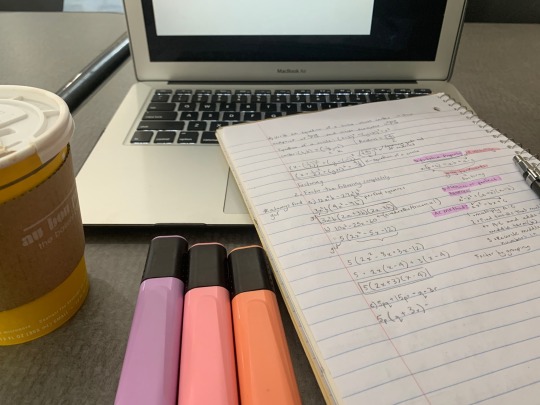

9.1.23
had a pretty fun day yesterday :)
37 notes
·
View notes
Text
Class 8 NCERT Rational numbers solved problems
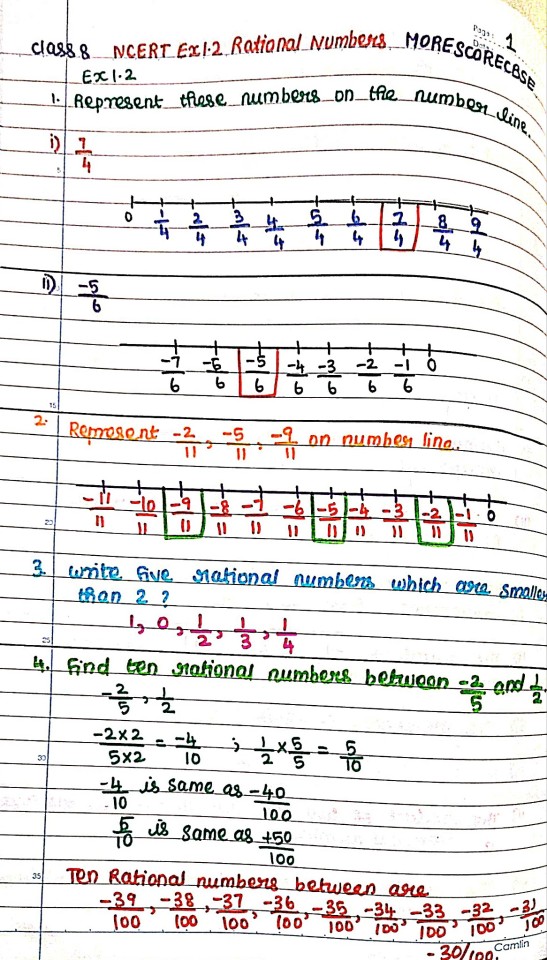
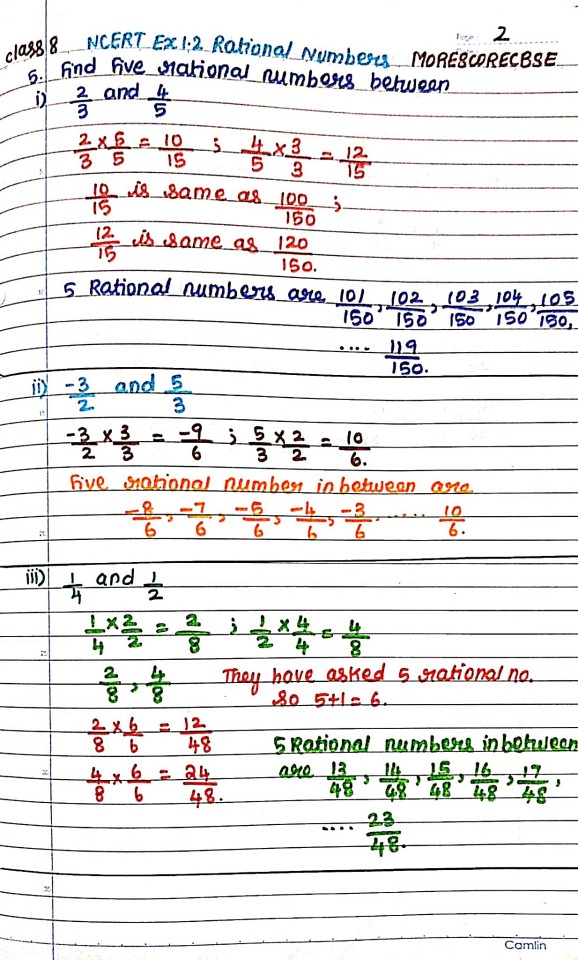

#education#notes#school#youtube#studyblr#students#homeschool#latitudes#maths#maths tutoring#math rock#mathcore#mathematiques#mathematics#math#math books#math blaster#math blog#study study study#study motivation#college studyblr#new studyblr#study blr#study hard#study inspiration#study with me#study aesthetic#study notes#study inspo#studyblr community
28 notes
·
View notes
Text

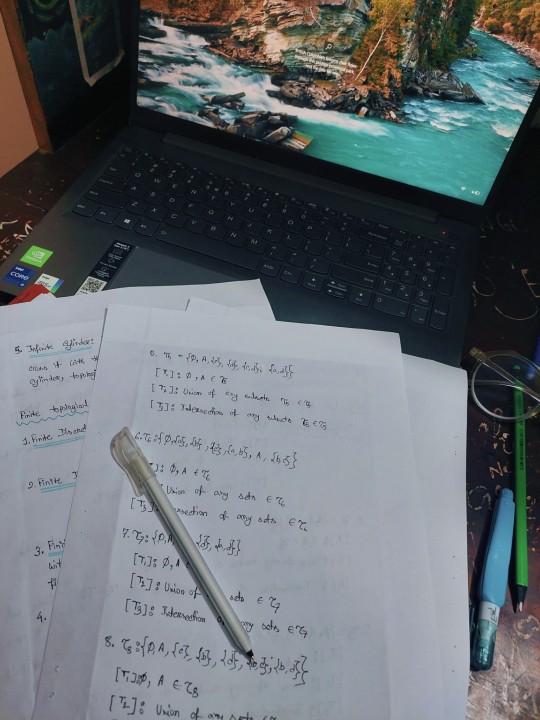
waffle and gilmore girls and topology assignment
#desi aesthetic#studyblr#studying#bangladesh#dark acadamia aesthetic#desi academia#desi studyblr#desiblr#study motivation#studyspiration#mathblr#math blog#mathematics#cozy aesthetic#study aesthetic#dark aesthetic
9 notes
·
View notes
Text
I've been off tumblr for quite a while now, for over a year, and throughout this time I've had my highs and lows, struggled with mental health issues, finished my first year in math undergrad, made new friends, and just learnt and changed so much as a person.
I've always been hesitant to call myself a math blog because of how little I know of math, but I think I'm just gonna take the risk of sounding like a hypocrite, and call myself one anyways.
so here goes nothing.......
#mathblr#math blog#i feel kinda stupid doing this#but sometimes being stupid is what makes me happiest
2 notes
·
View notes
Text
Pythagoream theorem
a²+b²=c²
3 notes
·
View notes
Text
Brownian Motion
Brownian motion is arguably one of the most important concepts in modern probability theory. In some sense, it is the canonical stochastic process with continuous paths, in a sense that will hopefully be elaborated on in a future post. This post will serve as a directory to the many important ideas related to Brownian motion, and will be updated as I make more posts on them.
The formatting of this post requires it to be viewed on the desktop version of this blog’s website.
Introduction
Recall that a (continuous-time) stochastic process is a collection of real-valued random variables $(W_t)_{t\geq 0}$ defined on a probability space $(\Omega, \mathcal{F}, \mathbb{P})$. Brownian motion is defined as follows:
Definition (Brownian Motion): A continuous-time real-valued stochastic process $W := (W_t)_{t \geq 0}$ defined on a probability space $(\Omega, \mathcal{F}, \mathbb{P})$ is a Brownian motion (in $\mathbb{R}$) if:
$W$ has continuous paths; that is, for (almost) all $\omega \in \Omega$, $t \mapsto W_t(w)$ is a continuous function of $t$.
$W$ has independent increments; for all $0 \leq s \leq t \leq u \leq v$, we have that $W_v - W_u$ and $W_t - W_s$ are independent.
Increments of $W$ are normally distributed; for all $0 \leq s \leq t$, $W_t - W_s \sim \mathcal{N}(0,t-s)$, where $\mathcal{N}(\mu,\sigma^2)$ denotes the normal distribution with mean $\mu$ and variance $\sigma^2$.
A Brownian motion starting from 0 is known as a standard Brownian motion. An $\mathbb{R}^d$-valued stochastic process $W$ is a Brownian motion in $\mathbb{R}^d$ if and only if its components are independent Brownian motions in $\mathbb{R}$.
Directory
The Existence of Brownian motion (and what this means!) [TBD]
Characterisations of Brownian Motion [TBD]
Skorokhod’s Embedding Theorem (Any symmetric random walk with increments of finite variance can be embedded in a standard BM) [TBD]
Donsker’s Invariance Principle (Any random walk with increments that are zero-mean and of unit variance has the standard Brownian Motion as its scaling limit) [TBD]
Dambis-Dubins-Schwarz (Every continuous local martingale is a time-changed Brownian motion.) [TBD]
Martingale Representation Theorem (Any $L^2$-bounded martingale adapted to the filtration generated by a BM can be written as a stochastic integral with respect to the BM.) [TBD]
Brownian Motion on Manifolds [TBD]
3 notes
·
View notes
Text
Let me introduce myself...
Hi there!
I'm Isabelle, a first-class maths graduate offering tutoring in maths (up to BSc), French (up to B2), and religious studies (up to A-Level). I also give advice about studying abroad, CVs, and building your LinkedIn profile. I am DBS Checked and have studied in the University of Bristol and Sorbonne Université (Paris).
For homework assistance, pre-exam cramming sessions, and academic support, please send an email to [email protected] to find out if I'm the right tutor for you!
#study motivation#university student#maths#maths tutoring#mathematics#math blog#religious education#religious studies#french#french studyblr#french student#academia#academic assignments#tutoring#online tutoring#tutoring services#homework help#school#high school#university studyblr#a levels#a level maths
0 notes
Text

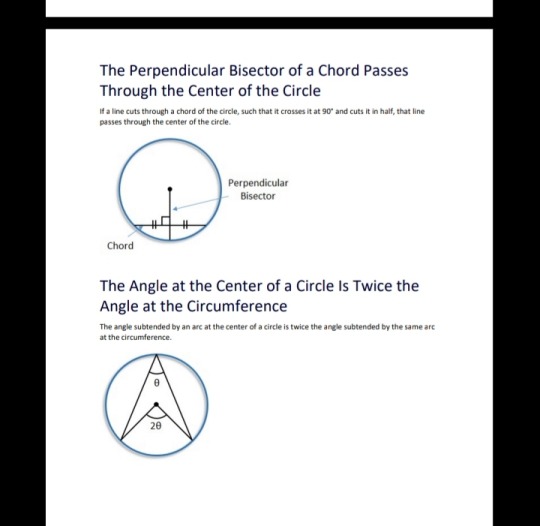


Day 1/100 of productivity...
#august#spilled ink#books#books & libraries#books and reading#reading#bookblr#study motivation#motivation#maths#maths teacher#mathematics#mathblr#math#math blaster#math blog
1 note
·
View note
Link
What is a Sum Maths - Importance and Use of Sum Maths
0 notes
Text


8.14.23
review continues :)
#studyblr#studyspo#study motivation#study notes#study blog#study aesthetic#mathblr#math blog#mathematics#math
3 notes
·
View notes
Text
Class 8 chapter 3 understanding Quadrilaterals solved problems




#education#notes#school#youtube#studyblr#students#homeschool#latitudes#maths#maths tutoring#math tricks#mathematics#math tips#math tutor#math teacher#math test#math tag#math blog#math studyblr#study study study#study tips#new studyblr#college studyblr#study aesthetic#study inspo#study inspiration#study blog#study motivation#studyblr community#studygram
4 notes
·
View notes
Text
Part 2: August 28, 2022: Natural Generalization, Natural Borders, Representation, Tree Democracy and Ground Up Category Theory
Yesterday, I spoke on the fact that higher level representation carries all of the properties of spatial reasoning–especially for abstract algebra–and that it therefore sees a drop in ability to follow because spatial reasoning is not a normative type of learning. It is nonverbal, and the nonverbal is viewed as “antisocial” as there is an erroneous claim that what is not verbal is not social. That’s a whole other debate. Needless to say, we establish that language is not antisocial or social, as we see antisocial and social uses of language all the time. The same applies to spatial reasoning. These are just means and methods of establishing connections between things, and one carries more social information (tones, pitch, body motion) but that doesn't inherently mean the results lead to more of that type of interaction. In fact, they can often signal that these interactions must be terminated.

One species’ poison is another species’ treasure: These plants flock and frolick to all those terrible things you kept pent up inside in your journal. Ah yes, CO2. And finally somebody listens! Makes sense (plant cents) to these guys too. It’s just a win-win all around.
Moving on from that, we ask the question–what then is this representation that causes the drop off? In mathematical notation, a great deal of information is compacted. The specification or analysis of these notations, as their authority is diffused into natural language, then becomes a hot-spot politically for the descriptions thus. For instance, as I read the resource I found on Representation Learning for Natural Language Processing by Liu, Lin, and Sun I found a phrase I consider to be better described as “organized” described thus;
“distributed representation is able to represent data in a more compact and smoothing way.”
I thought that this instance was very funny for several reasons. First, it illustrated my beef with notation. Here we were in a book on representation in relation to natural language, and the function of organization had its authority diffused into the natural language description of “compact and smoothing”. Now, in this situation it may see somewhat comical. And of course, political. “Oh, I see what she’s saying.” “No I don’t. I think they meant something else.” In the end, it doesn’t matter. Why? Because the point’s already been made. We had it easy, as “organization” is relatively easy for all of us to understand as a function. Though we may have different mental constructions, it seems that most of us arrive at the same point about what is and isn’t organized. But, this isn’t the case with other mental notations. These functions are not something easily identifiable as the difference between your daughter’s room and your son’s room. In different cultures, there might be an understanding that one is more likely to be more organized than the other one. Again, it doesn’t matter. The politicization is stripped away for the general, trans-national function, organization. Clean and apolitical. Supposedly. We’ll get there later, don’t worry.
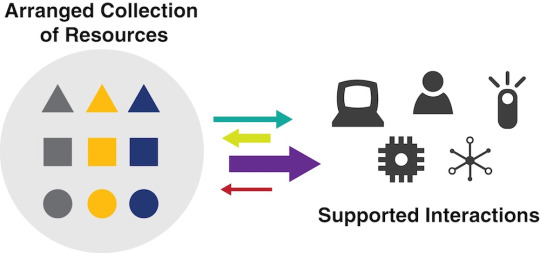
The Organizing System Concept
So we start by saying that notation is something different than a word. Instead of “to run”, we have a name of a function, running. However, here, “running” is used descriptively, while notation supposedly contains everything required to instantiate, right then and there, running itself. We see this in our application of involution–that when I apply the symbol of the cathedral to the function of the cathedral, the human glory that coheres the two is the result. Or when I apply the function of complexity to its possible genetic set, a human being bafflingly arrives out of the womb.
So not only is representation spatial, but it is the organization of functions, in a form that is both kinetic and potential depending on the circumstances–just the syntax of a mathematical sentence can decide if it has kinetic or potential power in the given sentence. So is that language as we know it? Or is it dancing? Or dancing as language? When I think of the forms described by the late Maryam Mirzakhani or the “shape of proofs” this is what I mean.

The final comedy is that what is often called “intuitive” is a way to create rigor–an unpacking of the implicit politicizations in a contained moving or non-moving function, in order to tease out the errors or accuracies in analysis, and send it back up to the sort as a specified function. In fact, that is most of the work of many researches…simply teasing out inefficiencies in the original description, releasing powers to the function that were previously unknown due to the carelessness of tongue. And that these things that are called “intuitions” actually stand greater chances when naturally described than those who may see a representation’s inherent organization and endearingly call it a “smooth and robust appearance”, indeed these big guys may be intuiting most of the language with which they speak.
As with all magics, one must speak in a careful tongue. Only then do the most encrypted of all creatures, the functions of nature, feel safe enough to speak back. These trees don’t have brains, but they are the products of moving and dancing with each other and the light, and doing what is needed to finance the endeavor. What looks like chaos for a leaf is another denser network (oh I’m sorry, human)’s tree. And maybe this is the vision that belongs to the greatest mathematicians among us, if their understandings are true, and their pursuit of closeness to the subject sincere. One doesn’t need money to see the forest for the trees. It will just lead you back here. A sharp tongue, a sharp spatial sense, and a little bit of magic.

#Math blog#math journal#math magic#math journaling#mathematics#representation#machine learning#mathematical notation#natural generalization
0 notes
Note
C=πR2
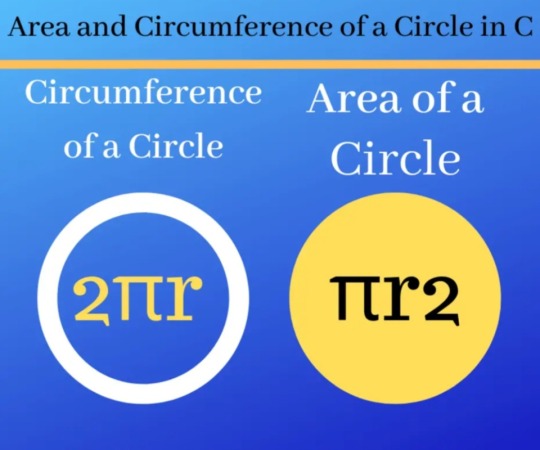
0 notes
Text
Being into math is like blorbo from my textbooks
723 notes
·
View notes
